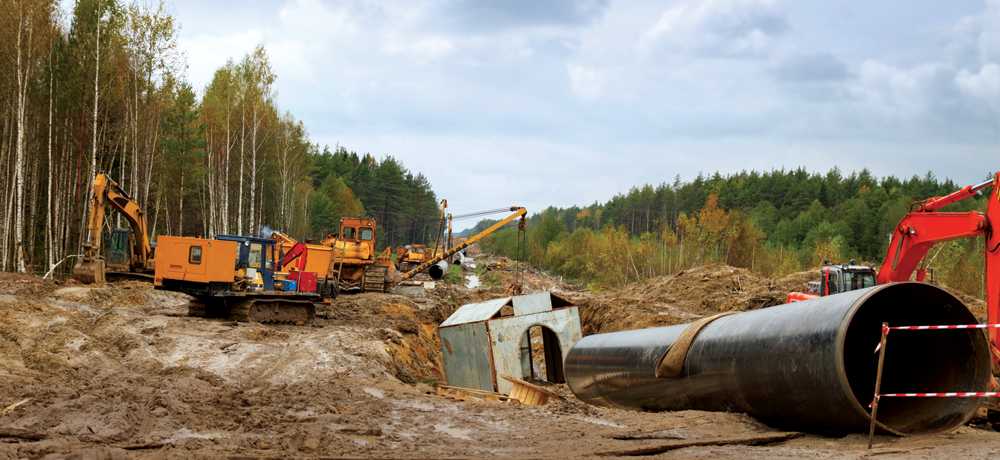All
Regulators Rule on Conn. Natural Gas Expansion

Energy marketers in Connecticut face a long, tough battle with the natural gas utilities after state regulators gave their preliminary approval to a plan to grow the state’s natural gas customer base.
Chris Herb, President of the Connecticut Energy Marketers Association (CEMA), said that the state Public Utilities Regulatory Authority (PURA) tentatively approved a plan by Yankee Gas, Connecticut Natural Gas, and Southern Connecticut Gas to expand their pipelines by 900 miles and convert 280,000 homes and businesses to natural gas.
No Free Ride for Utilities
While PURA gave its preliminary approval to the plan, it also required utility shareholders to assume more financial exposure than they had proposed for their expansion projects. If the utilities do not meet certain performance standards, PURA will require them to pay for the cost of the project, according to Herb. This is important because the utilities are totally averse to paying for the expansion of their infrastructure, he explained. “Any requirement that would lead to the gas company using their own capital will halt their efforts to expand,” he said.
“It is the opposite of build-it-and-they-will-come,” said Herb. He said the utilities wanted to be able to bring pipelines to a neighborhood without assuming financial risk, but PURA said shareholders would be on the hook for any portion of those costs that are not covered by conversions.
“The good news is that we will not see a reckless expansion, because the shareholders are responsible when customers are not converted,” he added. “We would rather that this not happen, but at least there is some semblance of sanity in what the state is allowing.”
Homeowners and businesses that want to convert to natural gas will have to pay higher rates and pay for a new heating system if this plan is approved, CEMA wrote in a recent announcement. “It is clear in this decision that natural gas rates will be on the rise and that does not take into consideration any future commodity cost increases,” CEMA stated. “The rate increases only include the cost of infrastructure and not the cost of the gas.”
Cost Allocation
The draft decision would enable the utilities to impose costs on ratepayers as follows: Businesses and multi-family dwellings that convert to gas would see a 50 percent rate increase; homeowners more than 150 feet off a main would pay 30 percent higher rates; and homeowners less than 150 feet off a gas main would pay 10 percent more. Existing gas customers will also shoulder a portion of the cost through higher rates.
“Our position from Day One was that we wanted no taxpayer money used for this expansion,” Herb explained. “We succeeded on that, but now we are concerned about the use of existing ratepayer money. Current customers already paid for the existing infrastructure, and they should not be charged for the new expansion. We’ve made those objections clear to the state. We hope the pay structure will be discussed in the final version.”
“In our industry, if we pick up a new customer heating with one form of energy and they want to convert, they have to pay for it, and that is our expectation with natural gas,” he added. “They should have to pay for all of it. We want a level playing field. We don’t expect the government to interfere in a free market. When existing ratepayers subsidize new ones, you’ve created a false pricing system that makes it more conducive to convert.”
Street Fights
Herb said the natural gas expansion plan would be executed as a series of local projects, and CEMA is prepared to dig in its heels on every one. “If you go on to the front page of our website, you’ll see a button that says ‘Report natural gas activity.’ Whenever there is a new project, we will hear about it, and we will do a street fight. We will go into every neighborhood where there is pipeline expansion activity and inform the customers about the true cost of converting. We’re going to talk about the Oilheat story and how we can serve them better,” he explained. “We’ll do this through a range of media, including direct mail and Internet. Of course, CEMA works closely with the American Energy Coalition, so we’ll draw on their resources, too.
“We’ll fight the utilities everyplace they are. We’re good at that kind of thing, and I am confident we will come out the winners.”
Asked how serious the threat is to CEMA members, Herb said, “It’s hard to tell. We were pleased that the regulators built in provisions that would require shareholder contributions. That is one of our main thrusts. We believe shareholders should pay for the growth of the utilities. If our members want to expand, they have to buy the trucks, hire the people, do a business plan and obtain the financing. We believe those things should be paid for by the owners, and we are pleased to see some recognition of that.”
PURA was expected to announce its final decision in late November.
Related Posts
 Why Quality Matters in Your Biofuel Blends
Why Quality Matters in Your Biofuel Blends
Posted on June 25, 2025
 Incorporating Higher Blends of Biofuels
Incorporating Higher Blends of Biofuels
Posted on May 14, 2025
 NORA Programs at Eastern Energy Expo
NORA Programs at Eastern Energy Expo
Posted on May 13, 2025
 March Short-Term Energy Outlook
March Short-Term Energy Outlook
Posted on April 28, 2025
Enter your email to receive important news and article updates.
